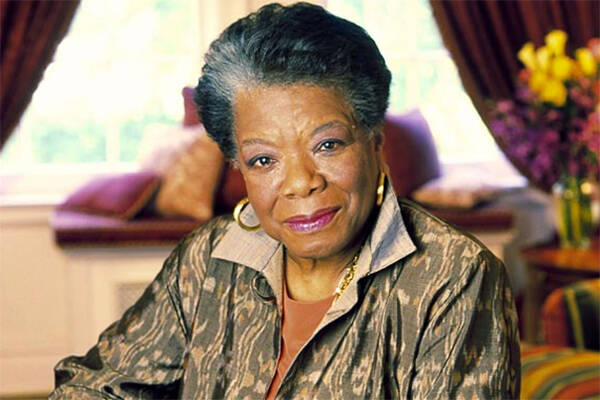On May 28, at the age of 86, Dr. Maya Angelou, renowned poet and writer, died. Hers was sometimes a tragic life, but also one filled with wonder and surprises.
Born in St. Louis in 1928, Angelou moved to Stamps, Arkansas when she was three. After being sexually assaulted at the age of eight, the author refused to speak for five years; she believed that her confession of being assaulted to her brother contributed to the murder of her rapist. It was during this time that she learned the power of words and found her love for literature and writing.
Angelou gave birth to her son at the age of 17 in 1945 and married a Greek man in 1951 (interracial marriage at the time was practically unheard of). After the marriage ended, three years later, Angelou worked as a singer and dancer in San Francisco.
In the early 1960s, she moved to Africa with her son, where she worked at a variety of publications, like The Arab Observer and the Ghanaian Times. During this decade, Angelou also spent time with other renowned African American public figures, like Malcolm X, Martin Luther King Jr. and James Baldwin. Baldwin mused that in this moment, society “first witnessed the breadth and depth of Maya Angelou’s spirit and creative genius.”
Angelou’s work spans genres—poems, plays, essays, memoirs—but it is her acclaimed autobiography that first put the author on the literary map. I Know Why The Caged Bird Sings was published in 1969 by Random House and it is the first part of Angelou’s seven-volume autobiographical series. The author’s editor at Random House had tried, to no avail, to convince her to write autobiographically; but it was a challenge from Baldwin that finally stimulated Angelou to tell her life story.
I Know Why the Caged Bird Sings documents the first 17 years of Angelou’s life and ends with the birth of her son, Guy Johnson. The book focuses on the young Angelou’s struggles with her African American identity, racism, sexual assault and her relationship with literature. She describes her identity struggle in a scene in which she wishes to have the physical attributes of a white movie star. Angelou writes, “I was going to look like one of the sweet little white girls who were everybody’s dream of what was right with the world…Wouldn’t they be surprised when one day I woke out of my black ugly dream, and my real hair, which was long and blond, would take the place of the kinky mass that Momma wouldn’t let me straighten?”
Another scene captures the journey African American children often made during the Jim Crow Era: “I discovered that the United States had been crossed thousands of times by frightened Black children traveling alone to their newly affluent parents in Northern cities, or back to grandmothers in Southern towns when the urban North reneged on its economic promises.”
Angelou’s poetry also focuses on the author’s identity, particularly the tension between identity and gender. This is evident in her volume And Still I Rise. In “Still I Rise,” one of the 32 poems in the volume, she describes the oppression of women and their resiliency:
Out of the huts of history's shame /
I rise /
Up from a past that's rooted in pain /
I rise /
I'm a black ocean, leaping and wide, /
Welling and swelling I bear in the tide. /
Leaving behind nights of terror and fear /
I rise /
Into a daybreak that's wondrously clear /
I rise…/
I rise /
I rise.
Angelou’s repetition allows the reader to truly feel the resiliency of women. Also in the volume is “Phenomenal Woman,” arguably Angelou’s best-known poem. She describes herself as a woman who is proud of her physicality for it is a part of her feminine identity. Angelou writes:
When you see me passing /
It ought to make you proud. /
I say, /
It's in the click of my heels, /
The bend of my hair, /
the palm of my hand, /
The need of my care, /
'Cause I'm a woman /
Phenomenally. /
Phenomenal woman, /
That's me.
The beauty in “Phenomenal Woman” lies in Angelou’s focus on the actual female body. As Harold Bloom stated in his review of the volume, it is a “hymn-like poem to women’s beauty” and its “self-confident speaker reveals her attributes as a phenomenal woman.”
Maya Angelou leaves behind a myriad of work: eight autobiographies, over 12 volumes of poetry, essays, plays and even cookbooks. Angelou once stated, “It is wonderful to celebrate people who work.” Now that her work is done, let us celebrate the life of Maya Angelou.








